India, which received the Christian Faith through the Apostle Thomas’ preaching of the Word, was ruled by King Abenner, a worshipper of idols and a fierce persecutor of Christians. For a long time, he did not have any children. Finally, his son was born, and was named Ioasaph. At the birth of the prince, the wisest court astrologer predicted that the prince would adopt the Christian Faith being persecuted by his father. Wanting to prevent the fulfillment of that prophecy, he ordered that a separate palace be erected for the prince, and that the prince never hear a single word about Christ and His teachings.
As a youth, the prince asked and was given his father’s permission to go outside the borders of the court, and as a result first saw that there exist suffering, disease, old age, and death. This brought the prince to ponder the vanity and pointlessness of life, and he spent increasingly more time in serious meditation.
At that time, a wise hermit, the Venerable Barlaam, had taken up his ascetic struggle in a far-off desert. Through a divine revelation, he learned of the youth’s painful suffering in searching for the truth. Venerable Barlaam left the desert, and in the guise of a merchant, went to India. Upon entering the city in which the prince’s palace stood, he announced that he had brought with him an especially precious gemstone which had the miraculous capacity to heal diseases. Brought before the prince Ioasaph, he began to lay out to him the teachings of the Christian Faith, first employing parables, and then teaching directly “from the [books of] the Holy Gospels and the [Epistles of] the Holy Apostles…” From Barlaam’s instructions, the youth realized that the precious stone was faith in the Lord Jesus Christ. He came to believe in Him, and asked to receive Holy Baptism. After baptizing the prince and directing him to fast and pray, Venerable Barlaam departed to the desert.
Upon learning that his son had become a Christian, the king was filled with anger and grief. At the advice of one of his nobles, he directed that a debate between Christians and pagans be held. In that debate, a magician and sorcerer named Nakhor was to appear in the guise of Barlaam. In the debate, Nakhor was supposed to admit defeat, and thus turn the prince away from Christianity. In a vision in his sleep, Ioasaph learned of the planned trick, and threatened Nakhor with grievous punishment should he be defeated. The terrified Nakhor not only defeated the pagans, but he himself believed on Christ, repented, received Holy Baptism, and went off into seclusion in the desert. The king tried by other means to sway his son from Christianity, but the prince overcame all temptations. Then, upon the advice of his nobles, Abenner gave his son half his kingdom. As ruler, St. Ioasaph established Christianity in his realm, rebuilt churches, and ultimately converted his father King Abenner to the Christian Faith. Soon after his Baptism, King Abenner reposed. St. Ioasaph left the kingdom and departed to the desert in search of his teacher, Elder Barlaam. For two years, enduring attacks and temptations, he wandered the desert, until he reached the cave of Venerable Barlaam, who was pursuing salvation by engaging in ascetic silence. The elder and the youth took up their ascetic struggles in common. As the time for Venerable Barlaam’s repose approached, he served the Divine Liturgy, communed of the Holy Gifts of Christ, and communed St. Ioasaph. Then, having spent seventy of his one hundred years in the desert, he departed to the Lord. After committing the Elder to the earth, St. Ioasaph remained in that same cave, continuing the ascetic podvig of a desert-dweller. He spent thirty-five years in the desert, and at the age of sixty, departed to the Lord.
At the instructions of a certain hermit, Barakhia, St Ioasaph’s royal successor, went to his cave, and discovered the incorrupt and fragrant relics of both ascetics. He brought them to his homeland and had them interred in a church erected by Venerable Prince Ioasaph.
Used with permission.

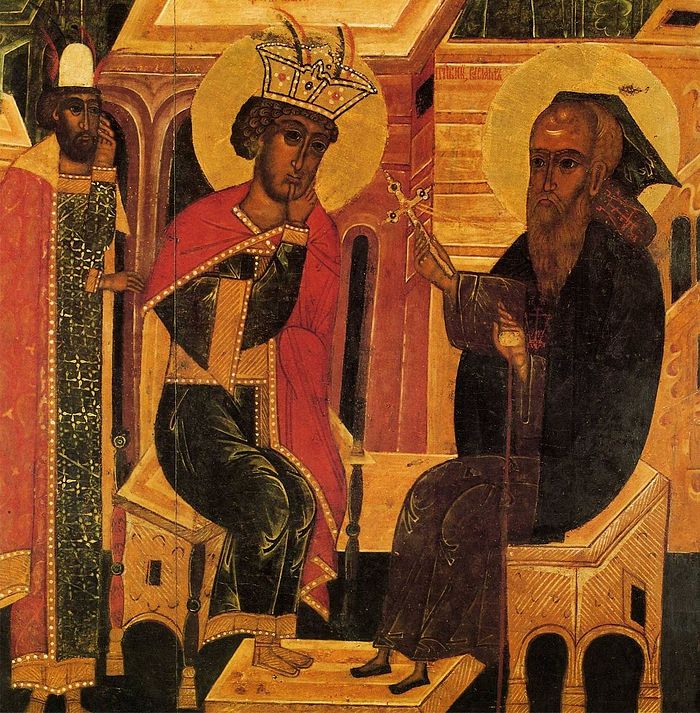
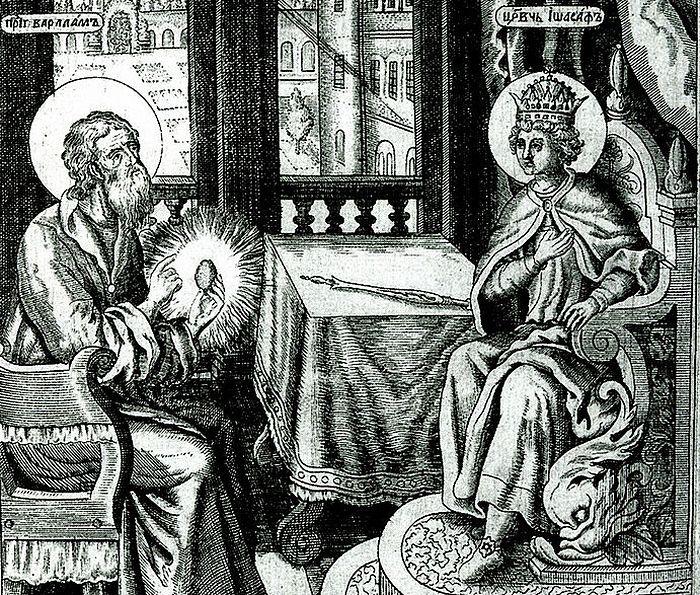
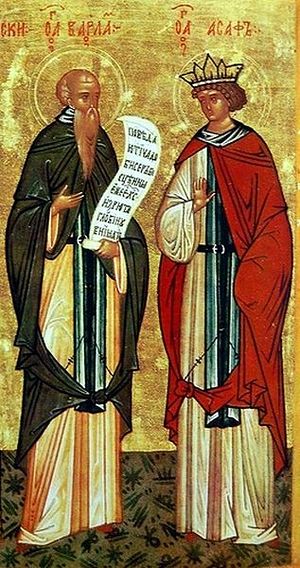
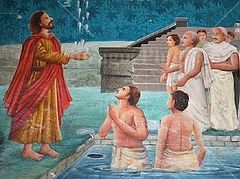

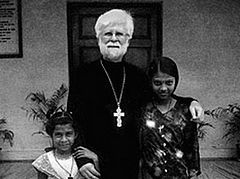
Osiris, of course, was a "Resurrection god" and oddly enough, this prince (13th son), once he became king (he didn't "die" at 60, he became king when his very old father died after ruling for 50+ years) is depicted wearing a crown that looks very, very similar to a Catholic pope's crown.
Can you guess his historical name?
Thanks.